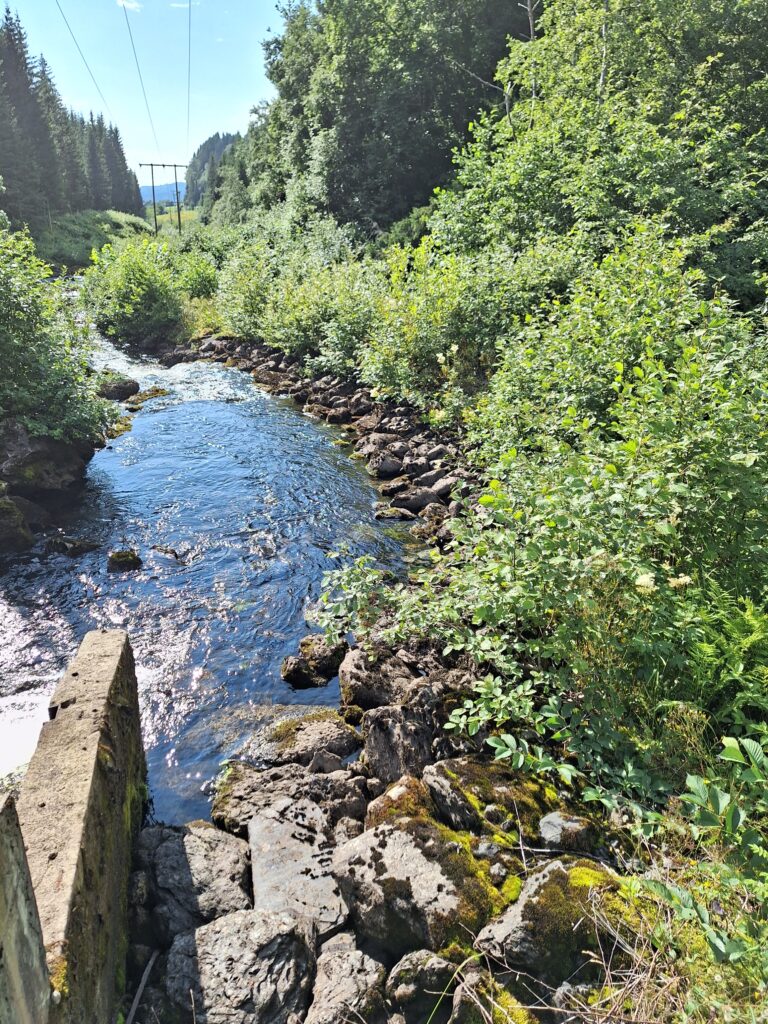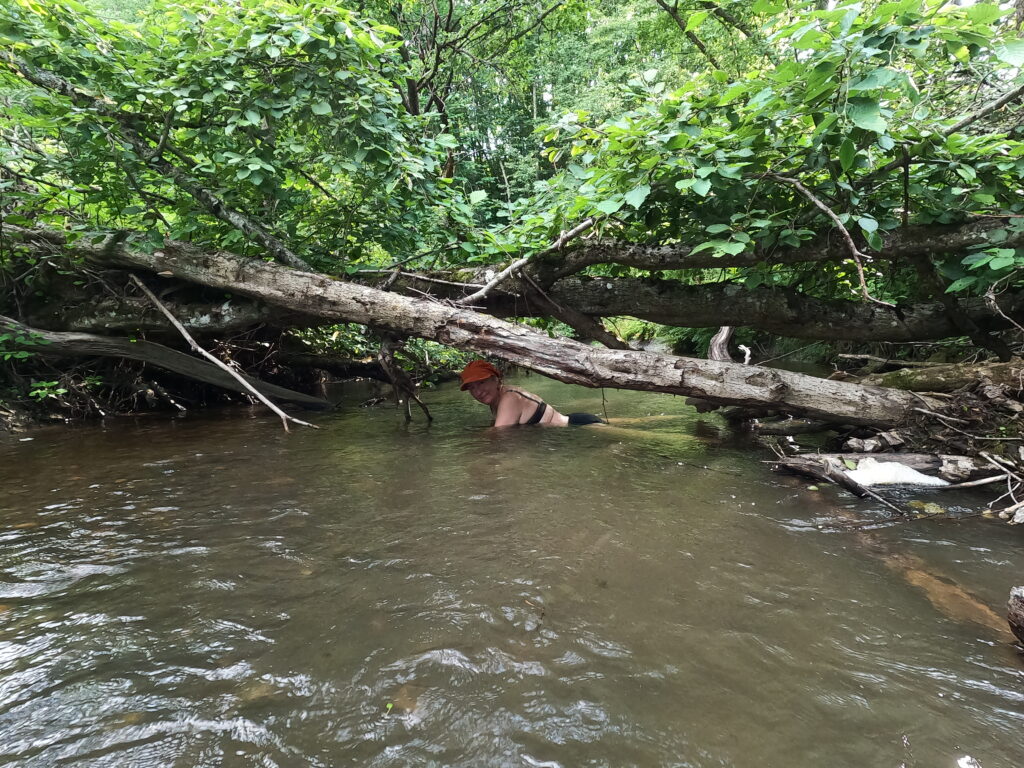We had visited both Molovika and Storvika, and were wondering what more fun we could come up with in Stjørdal, since it had already been proven that the beaches in this municipality are top swimming spots. After searching here and there, we noticed that by Gråbrekk there should be both a waterfall and a pond, both excellent targets for swimming adventures. We thought.

Gråbrekk has been inhabited since the Stone Age. There is a burial mound on the farm, and stone tools have also been found. In recent times, the place is known for industry, including a mill. The name Gråelva does not come from the colour grå (grey), but from Norse ‘groðr’ = to grow, i.e. a river that sometimes floods, in combination with the word ‘brekka’ for hill.
The first known user of Gråbrekk was Nils Graderbrek in 1520. A modern mill was set up in 1860, and eventually a dam for a water reservoir, called Gråbrekkdammen. In addition to the mill, various industries were started: bone meal and guano factory, machine production, bicycle production and indeed – a puffery! The puffery produced puffed rice (Ping) and puffed wheat (Pang). The puffing took place with a ‘cannon’ that could shoot out 6-8 kilos of rice or wheat every 15 minutes. That explains the brand name ‘Ping and Pang’, which some of us remember from the 70’s. The silos at Gråbrek and Hegra are currently operated by ‘Felleskjøpet’.

There was no bath this afternoon. Gråbrekkdammen is a private area, so we cannot recommend swimming there, even though there is a floating jetty and otherwise fine conditions.
Almost 2 years went before aiming for the next bathing adventure in Stjørdal. What to come up with this time? It is very steep many places in the Trondheimsfjorden area – ‘Perhaps we should try to find a waterfall?‘
So we checked the map for the word ‘waterfall’ (foss), and one of the first to appear was Skuldbørstadfoss.

Skuldbørstadfoss power plant utilizes a drop of 23 meters in the river Mælaselva. It is so steep there that it is a bit scary to drive a normal car all the way. The power plant came into operation in 1910, but burnt down in 1972. Operation resumed with a new power plant in 1985.

It’s no good to bathe without neither water or waterfall, so this bath was a definite a ‘not‘.
The day was still not ended, and Tobatheornottbathe had several more names on the list. The trip continued – not too far – to Mælafossen waterfall. This time, aware of possible trouble, Knut checked first, to see if there was a power plant in the waterfall, and yes, Mælafossen has also been developed. But – due to maintenance – the Mælaselva river was supposed to run the overflow channel this summer (2023). It was an exciting project to see how that looked!

The Mælafossen hydroelectric power plant utilizes a drop of 38 meters in the Mælaselva. The plant was commissioned in 1918, but shut down in 1979, after a (generator) fire. Following reconstructions, new operation began in 1985.

It turned ut to be a long and difficult wade up the Mælaselva river. Walking in half-rotten matter, over and under fallen trees, wading in mud, surrounded by a strong H2S stench. What a day!

Idun became more and more skeptical, while Knut tried to keep our spirits up: ‘Around the next bend there’s probably a waterfall…‘, ‘…just a little further…‘, etc. We found no waterfall, and finally Idun decided this was it and turned around. That was certainly a good decision, but unfortunately Knut, on the way back, stepped on a rusty tool and had to go to the doctor for a tetanus shot.

Half a year later, a new Stjørdal trip was under way. We had got hold on tickets for the ‘Skatvalsrevyen’ (local revue in Skatval), and of course it had to be combined with a bath! Holsfossen sounded as an interesting place for us, and this time we couldn’t find any power plant mentioned by that name in Stjørdal. Maybe we could have our waterfall bath this time?

Holselva river is located below Forbordfjellet mountain. We found a (fenced) dam there too, but it was empty and we saw water in the river below, so we made an attempt to find a pool below the dam. It was a bit steep, but not too difficult. And we experienced the fun trick of having to climb over a partially demobilized fence to get out of a fenced area (without climbing any fence to get in).

We didn’t find no pool. No waterfall either. This concluded our attempts for waterfall bathing in Stjørdal this time. But we have received a tip about Strukhauet/Strukfossen, so we will be back!

When there is no swimming, why not go to a revue instead? We can really recommend the Skatvalsrevy. Great fun even for outsiders! In Norwegian of course.








